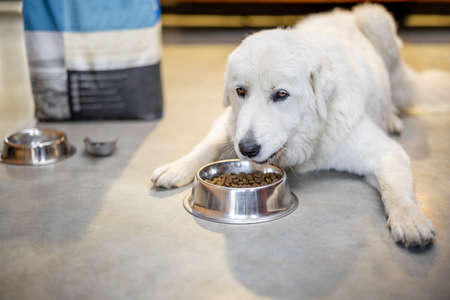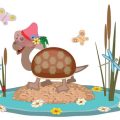1. Introduction: The Importance of Reading Bird Food Labels
For many in the UK, feeding garden birds is a cherished ritual—a way to connect with nature and support local wildlife right on our doorsteps. Yet, as responsible citizens and passionate bird lovers, it’s vital to look beyond the colourful packaging and clever marketing that often surrounds bird food products. Understanding what we are truly offering our feathered friends isn’t just about getting value for money; it’s about ensuring their health and the sustainability of our shared environment. By learning to read bird food labels carefully, we can make informed choices that genuinely benefit British birds, from robins hopping across the lawn to finches flitting through hedgerows. Informed decisions not only promote bird wellbeing but also contribute to broader conservation efforts within our communities—making every handful of seed a small act of stewardship for Britain’s treasured wildlife.
2. Decoding Ingredient Lists: What’s Really in the Bag?
When you pick up a bag of bird food in the UK, the list of ingredients can sometimes feel like deciphering a secret code. Understanding what’s inside is vital, not just for your own peace of mind, but also to ensure you’re supporting our cherished native birds. Let’s gently unpack some of the most common—and occasionally surprising—ingredients you might find, with a special focus on blends suited for British species and local conditions.
The Usual Suspects: Common Ingredients
| Ingredient | Description | Typical Users |
|---|---|---|
| Black Sunflower Seeds | High-energy, oil-rich seeds favoured for year-round feeding. | Tits, finches, sparrows |
| Peanuts (unsalted) | Packed with protein and fat; must always be aflatoxin-free for safety. | Blue tits, great spotted woodpeckers |
| Niger (Nyjer) Seed | Tiny black seeds loved by finches; requires a special feeder. | Goldfinches, siskins |
| Wheat & Maize | Often used as fillers; less appealing to many small garden birds. | Pigeons, doves, larger birds |
Spotting Regional Variations and Blends
UK-specific bird food mixes often reflect our unique avian community and climate. For example, “Robin mixes” might contain mealworms and fruit pieces, while winter blends may offer suet pellets or oats for extra calories during the cold months. Always look for labels that specify suitability for British birds or native species—this helps support local biodiversity and ensures your feeding efforts are truly beneficial.
Uncommon or Specialist Ingredients
- Dried mealworms – Excellent protein source for robins and blackbirds.
- Berries (dried currants or raisins) – Attract thrushes and starlings; soak first to avoid choking hazards.
- Safflower seeds – Increasingly popular as they deter squirrels but attract finches.
A Note on Fillers and Additives
Some cheaper mixes bulk out their product with wheat or barley, which native songbirds often ignore. Watch out for artificial colourings or flavourings—they’re unnecessary and best avoided. A good rule of thumb: The shorter and simpler the ingredient list, the better it is for wildlife health.

3. Marketing Jargon: Separating Fact from Fluff
When browsing the shelves of your local British garden centre or supermarket, you’ll notice a host of enticing phrases on bird food packaging. Words like “premium”, “no mess”, and “high energy” are splashed across bags, each promising to offer more for your garden birds. But what do these marketing terms actually mean, and how much should they influence your purchasing decisions?
Common Bird Food Marketing Terms in the UK
| Term | Typical Meaning | What it Means for British Birds |
|---|---|---|
| Premium | Implied higher quality ingredients; not legally defined. | May include fewer fillers, but always check the ingredient list for true value. |
| No Mess | Usually contains hulled seeds or suet, leaving less waste under feeders. | Convenient for tidy gardens; may suit urban or patio spaces common in UK homes. |
| High Energy | Contains ingredients like sunflower hearts, peanuts, and suet for extra calories. | Vital during colder British months when birds need more fuel to survive. |
| Wildlife Friendly | Claimed to be safe for a range of garden wildlife, not just birds. | A good sign if you want a balanced ecosystem, but look for certification where possible. |
| Naturally Sourced/Organic | Sourced with minimal pesticides and artificial additives. | Appeals to eco-conscious Brits; can support healthier bird populations if genuinely certified. |
Cultural Nuances in Labelling Language
The British market often favours understated confidence over bold claims seen elsewhere. For example, “quality assured” on UK packaging may reflect trusted local standards rather than flashy advertising. However, unlike food labelling for humans, many terms on wild bird food remain unregulated—meaning brands can use them freely without meeting set criteria. It’s wise to approach such labels with curiosity and a dose of healthy scepticism, especially when considering the wellbeing of native species like robins, blue tits, and sparrows that frequent British gardens.
What Do These Claims Really Mean?
Ultimately, while marketing jargon can be helpful as a starting point, the most reliable guide remains the actual ingredient list and nutritional breakdown on the back of the packet. By understanding what these commonly used terms really offer—and sometimes what they don’t—you can make informed choices that genuinely benefit local wildlife. Remember: a little knowledge goes a long way in supporting Britain’s beloved birds through every season.
4. Red Flags: Ingredients and Additives to Watch Out For
When you’re choosing bird food in the UK, it’s easy to feel reassured by colourful packaging and charming promises. However, a deeper look at the ingredients list can reveal additives and fillers that may do more harm than good for our feathered neighbours. As responsible wildlife stewards, it’s important to recognise these red flags—so your good intentions truly help local birds thrive.
Common Additives and Why They Matter
Many commercial bird foods contain ingredients that bulk up the mix but provide little nutritional value—or worse, can pose risks to avian health. Here are some commonly encountered additives and what they mean:
| Ingredient/Additive | Purpose | Potential Impact |
|---|---|---|
| Artificial Colourings | Enhances visual appeal of food | No nutritional benefit; may cause digestive issues or allergic reactions in some birds |
| Sugar/Syrup Coatings | Makes seeds more attractive to buyers (not birds) | Can promote unhealthy eating habits and attract unwanted pests |
| Chemical Preservatives (e.g., BHA, BHT) | Extends shelf life | Long-term effects on wildlife are unclear; natural alternatives are safer |
| Cheap Fillers (e.g., wheat, cracked corn) | Adds weight to product at low cost | Poor nutrition for many UK garden birds; often left uneaten and can spoil quickly |
How to Spot the Red Flags
- Look for ingredient lists that are short, clear, and predominantly feature whole seeds or nuts appropriate for local species.
- Be wary of vague terms like “cereals” or “derivatives of vegetable origin,” which can indicate low-quality fillers.
- Choose products free from artificial colourings and preservatives whenever possible.
- Avoid mixes with high proportions of maize, dried peas, or beans—these are rarely eaten by British garden birds.
A Compassionate Choice for Local Wildlife
Your care in reading labels goes far beyond your own garden—it has a ripple effect through local ecosystems. By choosing simple, wholesome ingredients tailored to native species, you ensure your contributions nurture rather than harm. This mindful approach not only supports the wellbeing of individual birds but also helps preserve the delicate balance of our shared environment—a gentle reminder that every bag you buy is an act of kindness towards Britain’s cherished wildlife.
5. Sustainable and Ethical Choices
As we become more aware of our impact on the environment, it’s vital to consider sustainability and ethics when choosing bird food in the UK. Reading labels is not just about nutritional value or price—it’s also about making responsible choices that reflect respect for nature, community, and future generations.
Why Sustainability Matters
Sustainably sourced bird food supports the preservation of wildlife habitats, reduces carbon footprint, and encourages biodiversity. When scanning labels, look for information on the origin of ingredients and how they were grown or harvested. Opting for local produce not only ensures freshness but also minimises transportation emissions.
Key Considerations for Ethical Bird Food
| Aspect | What to Look For | Why It Matters |
|---|---|---|
| Local Sourcing | Ingredients grown or produced in the UK | Supports British farmers, reduces transport emissions, and fosters community resilience |
| Eco-Friendly Packaging | Biodegradable, recyclable, or reusable packaging | Lessens landfill waste and environmental harm |
| Ethical Brands | Brands with certifications (e.g., RSPB partnership, Fairtrade) | Ensures products are responsibly made and profits may support conservation efforts |
| Palm Oil Free | No palm oil or sustainably certified palm oil only | Prevents destruction of rainforests and protects global wildlife habitats |
| Non-GMO Ingredients | Clearly labelled as non-GMO or organic | Avoids genetically modified crops that can negatively impact ecosystems |
Championing UK Values Through Your Choices
The UK has a proud tradition of caring for its countryside and wildlife. By selecting bird food from ethical brands rooted in these values—those that prioritise transparency, fair wages, and environmental protection—you are not only nourishing garden birds but also helping to preserve the landscapes we cherish. Next time you shop, take a moment to check if the label aligns with these principles; your mindful choice truly makes a difference.
Empowering Community: Sharing Knowledge and Building Better Habits
Once you’ve mastered the art of reading bird food labels, you hold a small but meaningful key to supporting wildlife in your local area. But the true impact comes when we share this knowledge with others—neighbours, friends, and fellow members of community groups. By fostering a culture of care for birds across British gardens and green spaces, we not only help our feathered friends thrive but also strengthen the bonds within our communities.
Suggestions for Sharing Your Learning
- Host a Garden Chat: Invite neighbours over for tea and biscuits while you discuss what you’ve learned about bird food ingredients. Share your favourite brands or recipes for homemade seed mixes.
- Create a Simple Guide: Summarise key points from this article and print them as handouts or post them on local noticeboards or WhatsApp groups.
- Organise a Bird-Feeding Workshop: Partner with your local community centre or allotment society to run a demonstration on choosing ethical, nutritious bird foods and deciphering marketing jargon.
- Share Resources Online: Use social media or neighbourhood apps like Nextdoor to highlight tips, trustworthy brands, and seasonal feeding advice relevant to UK birds.
- Encourage School Involvement: Suggest projects for children, such as making simple feeders or keeping a bird-watching diary that tracks which foods attract different species.
Building Better Habits Together
Small actions can have a big ripple effect. By nurturing habits such as checking ingredient lists, avoiding harmful fillers, and supporting sustainable brands, we collectively raise standards for wildlife care. Consider starting friendly challenges—like “Who can spot the most species in their garden?”—or setting up communal feeding stations in shared green spaces with clearly labelled feeders.
A Table of Simple Ways to Spread Bird-Friendly Habits
| Action | Description | Community Impact |
|---|---|---|
| Share Label Tips | Teach friends how to spot healthy vs. filler ingredients | Better nutrition for more birds |
| Bulk Buying Clubs | Group together to buy quality bird food at lower prices | Saves money; supports ethical suppliers |
| Seasonal Feeding Reminders | Email reminders about changing food types with the seasons | Keeps birds healthy all year round |
| Garden Visits | Invite neighbours to see your feeding setup and learn tips | Sparks interest and new friendships |
| Birdwatching Events | Organise group sessions to observe the effects of good feeding practices | Cultivates respect for nature together |
Together for Birds, Together for Community
The beauty of British gardens is magnified when we care not just for our own patch, but for the wider web of life that connects us all. By sharing knowledge about bird food labels and encouraging mindful choices, we help ensure that every chirp and flutter finds welcome in our hedges, parks, and hearts. Empower your community—one label, one conversation, one kind act at a time.


